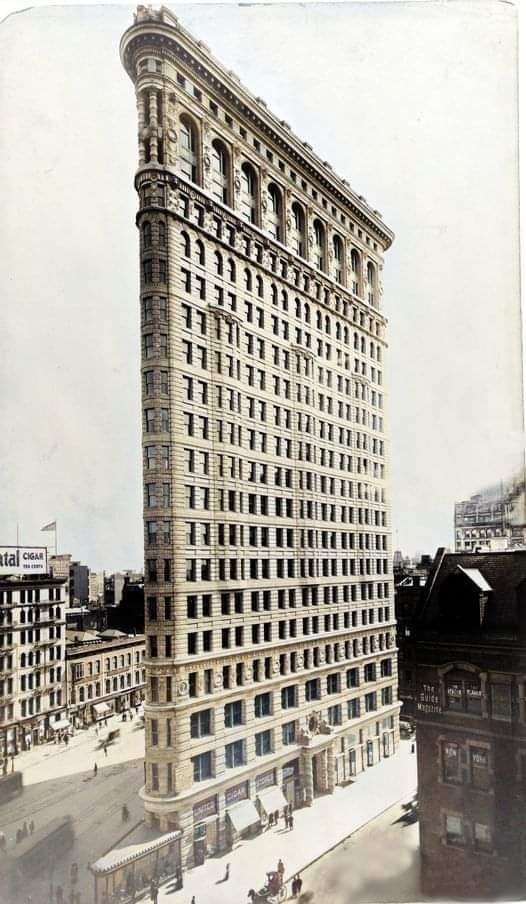The Flatiron Building: An Icon of Architectural Innovation

The Flatiron Building, located at the intersection of Fifth Avenue and Broadway in New York City, stands as a testament to architectural ingenuity and the spirit of the early 20th century. This iconic structure, completed in 1902, was designed by Daniel Burnham and has since become one of the most recognizable landmarks in New York City.
A Revolutionary Design
The Flatiron Building, originally known as the Fuller Building, was named after the Fuller Company, a major construction firm at the time. Its distinctive triangular shape, which resembles a flat iron, was a revolutionary design choice. The narrow, wedge-like structure was a necessity due to the unique plot of land it occupies, which forms a triangular shape at the convergence of Fifth Avenue and Broadway.
Engineering Marvel
Constructing a building of this shape and size was a significant engineering challenge. The Flatiron Building is built on a steel frame, which was a relatively new technique at the time. This framework allowed for the building’s impressive height of 22 stories (285 feet), making it one of the tallest buildings in New York City upon its completion. The steel frame also provided the structural integrity needed to support the building’s unique form and withstand the strong winds that buffet its narrow edges.
Architectural Style
The Flatiron Building is a prime example of Beaux-Arts architecture, characterized by its classical details and ornamentation. The façade is covered in limestone and glazed terra-cotta, featuring intricate designs that add to its grandeur. The building’s narrow, pointed end, often referred to as the “nose,” is only six feet wide, giving it a sharp, dramatic appearance.
Cultural Impact
Beyond its architectural significance, the Flatiron Building has made a substantial cultural impact. It has been featured in numerous films, television shows, and photographs, cementing its status as a cultural icon. The building’s unique shape and historical significance make it a favorite subject for artists and photographers. Its image has become synonymous with New York City itself, representing the city’s innovation, resilience, and artistic spirit.
Historical Context
At the time of its completion, the Flatiron Building was met with mixed reactions. Some praised its innovative design, while others were skeptical of its stability and aesthetic appeal. However, over the years, it has garnered admiration and respect, becoming a beloved symbol of New York City’s skyline. The building’s completion marked a period of rapid growth and modernization in New York City, reflecting the economic prosperity and technological advancements of the early 1900s.
The Legacy of the Flatiron Building
Today, the Flatiron Building continues to capture the imagination of people around the world. It stands as a monument to the visionary thinking and architectural prowess of its creators. The building is not only a functional office space but also a cherished piece of New York City’s history, embodying the city’s relentless pursuit of progress and its deep appreciation for artistic and architectural beauty.
In conclusion, the Flatiron Building remains a shining example of early skyscraper design and an enduring symbol of New York City. Its unique shape, historical significance, and cultural impact make it a true architectural marvel. As the city continues to evolve, the Flatiron Building stands as a reminder of the innovation and creativity that have always defined New York City.











